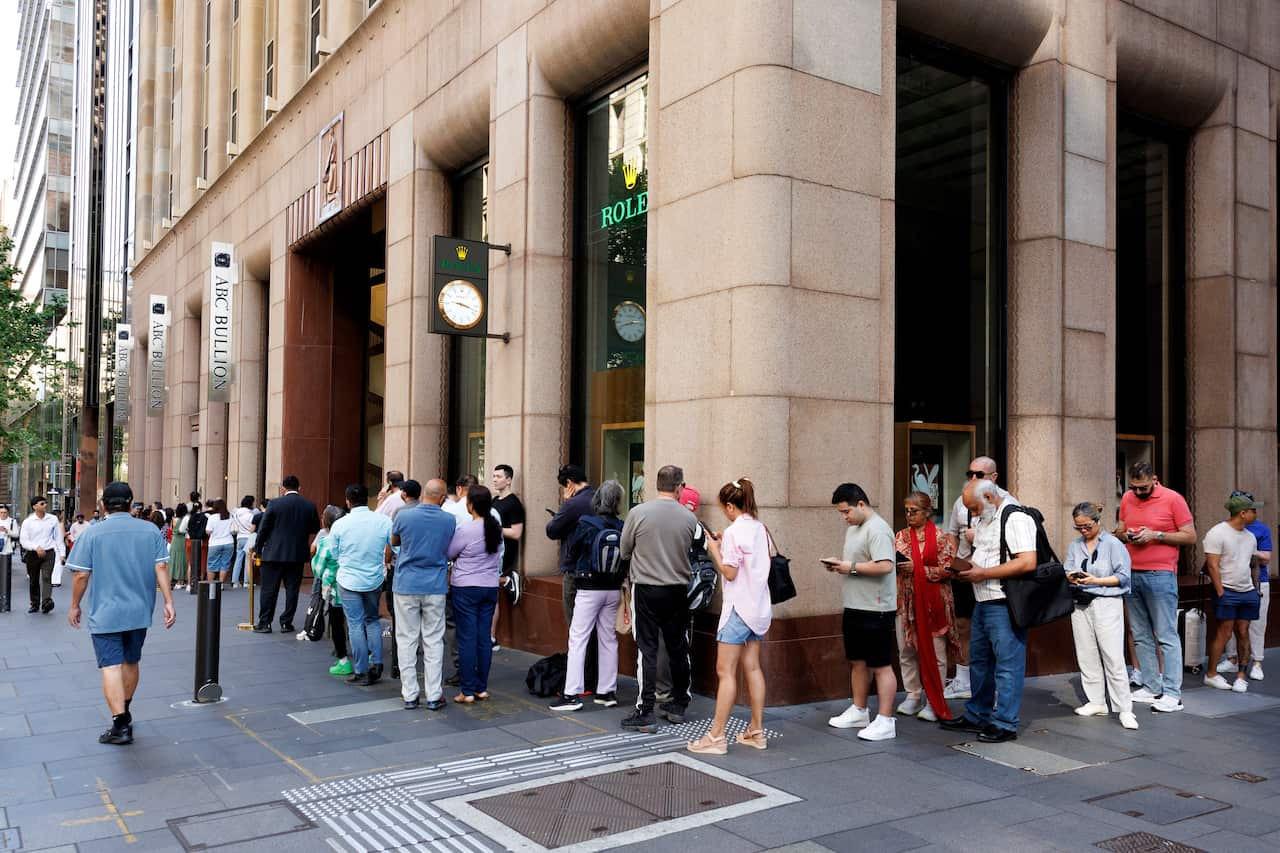Gold prices have soared this year, driven by a confluence of factors, including economic uncertainty and retail investors flocking to the yellow metal.
That long rally experienced its first big fall overnight, dropping by around 8 per cent from Monday’s peak of almost US$4,400 ($6,768) an ounce to a little above US$4,000 ($6,153), its biggest single-day decline in some 12 years.
Was it the bubble bursting — or simply an overdue correction to an "overbought" commodity?
What caused the gold surge — and its sharp fall?
Gold has had a blockbuster run this year — its best performance since 1979 — climbing by more than 50 per cent since the start of 2025.
That's come amid geopolitical and economic uncertainty, particularly in the US, all spurring demand for the precious metal, traditionally considered a "safe haven" asset.
Central banks around the world have built stockpiles of gold in efforts to diversify their assets and reduce their reliance on the US dollar.
There has been a particularly sharp rise in the past two months, with the price of gold soaring by around US$1,000 per ounce.
Tony Sycamore, a market analyst at IG, said the primary driver of gold's dramatic rise has been a "very strong impulse" to buy among retail investors due to a "fear of missing out".
"It's one of those momentum trades where it's in the news, people are hearing about it, they’re talking about it," he told SBS News.
Sycamore said in his 30 years of observing the markets, he'd never seen anything like this before.
"It's a real panic move, and it concerns me because I don't think people really understand what the driver is, other than they’re seeing people doing it," he said.
He said that while people had pointed to the US dollar and fiscal deficit for the surge, the US dollar had been broadly stable over the past three months: the time gold has experienced its most rapid rise.
Cameron Gleeson, the senior investment strategist at Beta shares, told SBS’ On the Money podcast that investors in gold were "overweight", and decided to "take money off the table".
"We reached a level where enough investors decided that that was the case to trim positions given how large those allocations have got within their portfolios, and as a result we see a slight retracement overall," he said.
Isaac Poole, the global chief investment officer at Oriania Private Wealth, told SBS News earlier this month that exchange-traded funds (ETFs) had been significantly pushing demand for gold up in recent months.
ETFs are funds that own a group of assets like stocks or bonds and are bought and sold like individual shares on stock markets.
"You are seeing this huge financialisation of gold bullion through ETFs and retail investors racing out to buy after the market's already up 70 per cent," Poole said. "I think that's been the big story over this year and particularly the last month."

Analysts say a "fear of missing out" among retail investors is one of the primary drivers of gold's sharp price increase. Source: Getty / Brendon Thorne/Bloomberg
"Everybody's gone to one side of the boat, and when everyone goes to one side of the boat, it generally tips back the other way. And that's what we've seen over the past 24 hours."
There has also been a general volatility in the market of late, with similar sell-offs in cryptocurrency and regional banks earlier this month.
Sycamore said that, together, an almost "perfect storm" had formed to create the conditions leading to the snapback.
After the gold rush: what happens next?
Despite gold’s abrupt drop, it’s important to frame the overnight plunge against the backdrop of its rise, including its US$1,000 climb over the past couple of months.
Sycamore said his sense was “the boat does stabilise”, as there were still good “medium-term” reasons to buy gold, but the question remained whether it would stabilise above US$4,000 or go lower.
“Price movements in markets aren’t linear; they don’t just move in one direction. We get these aggressive moves higher, followed by a snapback like we've seen. And the trend still continues in the medium term,” he said.
“It's been a snapback. Whether it's finished, we don't know the answer to that yet. But even if it does continue below US$4,000, then you'd probably have to imagine that we're going to probably find good buyers back where gold was trading two months ago, at US$3,500."
As it is, there are already signs of recovery. On Wednesday, gold rebounded to US$4,145 an ounce.
Gleeson said gold’s fall has definitely been significant, but that it won’t continue to dive majorly long term.
"A magnitude of that fall [around 6 per cent] for an asset class like gold is very substantial. We're not talking about cryptocurrency like Bitcoin here. People rely on gold as a store of value and that can be unsettling when you see that store of value fall away in price like that.
"Perhaps investors got a little bit ahead of themselves in the last month, that strong rally that we have seen through September and October. But over the long run, those drivers in the uncertainty that is in the world today still remains. And so we think investors will continue to invest over the long term in gold and gold ETFs."
Gold's pull-back said little about its fundamental price strength, but likewise neither had the last five per cent surge to new highs, Capital.com market analyst Kyle Rodda said.
"The underlying story for gold remains strong and is likely to remain well supported by expectations of US rate cuts, fiscal profligacy around the world and geopolitical risks," he said.
"It appears time for the gold market to normalise and gold prices to consolidate, albeit probably with some whipsawing price action in coming days," Rodda said.
— With additional reporting by Reuters news agency and the Australian Associated Press.
Share


